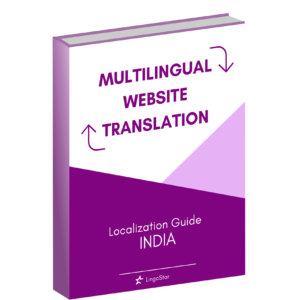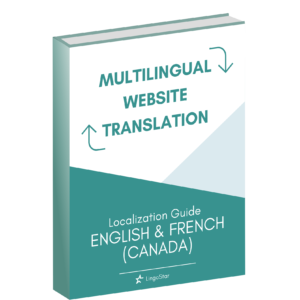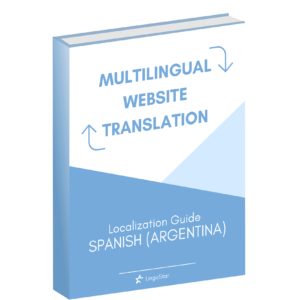Nov 27, 2014 | Blog, Translation
Translate Henry Ford’s Quote into Another Language Are you interested in applying your language skills and translating today’s positive business message? Or maybe you can proofread one of these existing translations? Make your contribution and share your knowledge. Enjoy being a translator! English Translation of Henry Ford’s Quote Whether you think you can succeed in your business, or you think you can’t, you’re right. (Adaptation of Henry Ford’s quote). Czech Translation of Henry Ford’s Quote Ať už si myslíte, že uspějete v podnikání, nebo si myslíte, že to nedokážete, v obou případech máte pravdu. (Adaptace citátu Henryho Forda). Slovak Translation of Henry Ford’s Quote Či si už myslíte, že môžete uspieť v podnikaní alebo, že to nedokážete, stále máte pravdu. (Adaptácia citátu Henryho Forda) Russian Translation of Henry Ford’s Quote Неважно, что вы думаете – можете вы достичь успеха в бизнесе или нет, – все равно вы правы. (Адаптация цитаты Генри Форда.) Dutch Translation of Henry Ford’s Quote Als je denkt, dat je een succesvolle ondernemer wordt, of als je denkt dat het niet zo is, je hebt altijd gelijk. (Adaptatie van een citaat van Henry Ford). Japanese Translation of Henry Ford’s Quote あなたがビジネスを成功できると思えば、できる。できないと思えばできない。どちらにしてもあなたが思ったことは正しい。(ヘンリー・フォードの引用の改変) German Translation of Henry Ford’s Quote Ganz gleich, ob sie denken sie können im Geschäft Erfolg haben oder sie können es nicht, sie haben recht. (Die Adaptation des Zitats von Henry Ford). Spanish Translation of Henry Ford’s Quote Tanto si piensas que puedes tener exito en tus negocios, como si piensas que no puedes, estás en lo cierto. (Adaptación de la cita de Henry Ford). Italian Translation of Henry Ford`s Quote Che crediate di...
Nov 27, 2014 | Blog, SEO, Translation
What Does It Mean to Be a Text-Based Medium? Written text is a very important means of communication on the Internet. Websites without written words are very rare, even impossible (if you consider the URL as being part of the website) to come across. The Internet has been at the origin of a revival of written forms of communication. Text is to be found everywhere on a web page: in the core of it (the message), in navigation tools (menus, links, banners, etc.) and even hidden in the programming code, which generally does not appear on the screen. E-mail has become the primary medium for communication in business (even if phone calls are still favored in some circumstances). Users find e-mailing functional because it is easy and quick, and because it does not require an immediate response from the recipient. Also, it has far more potential than telephone communication (attached files, links, multiple recipients, etc). Due to the Internet, words have acquired a great commercial importance. For example, they are used as keywords that help to reference a web page. These keywords will then be chosen by the user when he uses a search engine. They are also used as tags to classify articles within a blog. Another important use is on online shopping sites, especially when it comes to defining categories in a directory or tagging a product. Even if most users access websites through bookmarks or search engines, the choice of a URL remains a crucial investment for a commercial website. These are a few reasons why major websites often hire linguists to optimize their presence on...
Nov 25, 2014 | Blog, SEO, Translation
Socializing and Networking for Translators Many translators ask themselves: why should I socialize and network with other translators if I have clients and I am satisfied with my workload? The answer is that the translation industry is constantly growing and changing, and for every professional in this field it is essential to communicate with colleagues to keep track of events and grow with the industry. Networking helps people build relationships and gain trust. Due to networking, people exchange knowledge, experience, and ideas, and this generates new ideas and leads to progress. Social media opens a whole new world of networking opportunities: LinkedIn and Facebook, the two biggest professional platforms, let translators promote themselves, get support from their peers, and keep improving their professional skills. Research related to social networking by Pew Internet Project shows that Internet users get more support from their social ties, and Facebook users get the most support. By networking we mean not only being an active user of social media, but also attending events and conferences. Social media is a pretty abstract tool and it doesn’t always help to make a first impression. However, if you go to translation events or linguistic conferences, you are more likely to meet people who share your ideas and interests. Another way to network is to join a translators association, especially if you are working as a freelancer. For example, as a member of a translators association you can get good legal advice or support before signing a contract with a particular company or starting a new project that will monopolize all of your time. Some of these associations...
Nov 20, 2014 | Blog, SEO, Translation
Several Ways to Market Translation Services The Government of Canada’s Translation Bureau engaged PricewaterhouseCoopers LLP to conduct a benchmarking and comparative analysis study of the linguistic services industry in Canada and globally in 2012. The global language services industry is highly fragmented: there are a small number of large companies such as Bowne global solutions and Lionbridge which account for less than 5% of the worldwide market. The study demonstrated that today the global market includes over 25,000 organizations that offer different types of translations services, often in a limited geographic range. This means that the translation services market is getting more and more competitive each year, and to survive, translation agencies and independent translators need to pay strict attention to their marketing strategies. Independent translators need to be noticed, and one of the ways to do that is direct email. First, it is important to prepare a high-quality digital package that contains information about your education, mother tongue and language pairs, subject areas, translation/interpreting/voice-over skills, contact information, etc. Your documents have to be well organized, with references from clients if possible. Translators should contact as many translation agencies or companies as possible and say that you are available for work. Never forget about networking with people who work with foreign languages, translation, and international business, as they can help you find clients. Translation agencies, in turn, need to keep their websites current to attract customers and update the language list they are working with, how quick their service is, and their rates. It is also crucial to promote their services on social media as one of the key...
Nov 18, 2014 | Blog, SEO, Translation
Localization Our enormous mysterious world, which in ancient Indian mythology was believed to be resting on the backs of four huge elephants, has turned into something easily accessible due to the Internet and social media. When a business becomes global and wants to connect with customers around the world, in any web strategy, including social and mobile media, localization is the key element. Localization can bring great value to a company. Today, world-class organizations generate more than 60% of their revenue outside of their domestic market by initiating contact with global markets rich with opportunities. In other words, products and services get better results and attract target audiences more successfully when localized versions are available. For many years standardization has been a powerful strategy in consumer markets. However large chains face a huge problem: they have so many outlet stores open that they don’t have any more room to expand. When they find an attractive location to build another store, they face resistance from community activists. Another problem they face is lack of innovation: managers become so focused on meeting tight operational targets that they intentionally avoid any experimentation. Fortunately for companies, the era of standardization is coming to its end with the opportunity to expand due to localization. Retail giants such as Best Buy, Tesco, and VF have benefited from the new system by localizing their products. Focusing on a particular local market means improving resonance, engagement, and commerce. For example, Starbucks and Blackberry feature localized content on webpages aimed at specific countries, and this has increased interaction as much as 10 – 15 times compared to pages...
Nov 13, 2014 | Blog, SEO, Translation
Freelance vs In-house Translators If you want to build a career in translation, you need to decide whether you want to work as a freelance or in-house translator. What is the difference between these two positions and what are their pros and cons? Translators can either work for themselves as independent contractors, for a translation department of a company, or for a translation agency or organization. Those translators who work independently are called freelancers, and those who work for agencies and companies are in-house translators. An in-house position is attractive because it provides a translator with regular office hours and a stable income. A translator works on texts that the company or agency needs translated, attends events and meetings where he/she discusses large-scale translation projects, and goes to training sessions to learn about new equipment or software tools. An in-house translator has paid vacation, insurance, and other benefits typical of this type of office job. On the other hand, working for a company or agency means adjusting your work style and methods to those of the company, and potentially you could get tired of translating the same type of text over and over. Freelancers, on the other hand, set their own rates and can work whenever they want to, in any corner of the planet. They also must take care of their own marketing, invoicing, accounts payable and receivable, etc. Freelance translators can earn more per year that in-house translators, but their income is variable, and they have to take care of expenses such as taxes, insurance, and other business costs. On the other hand, marketing one’s self is a...
















